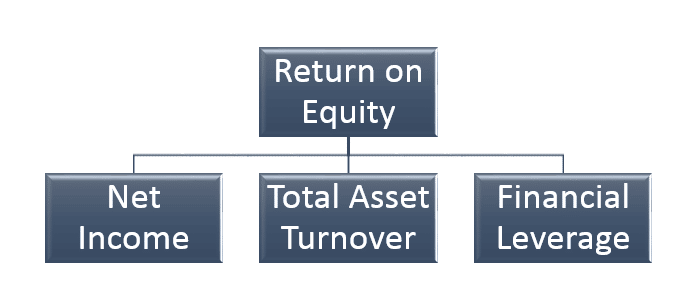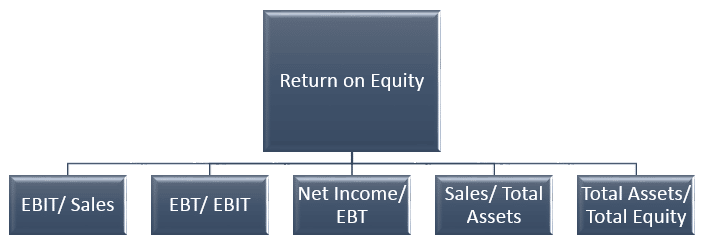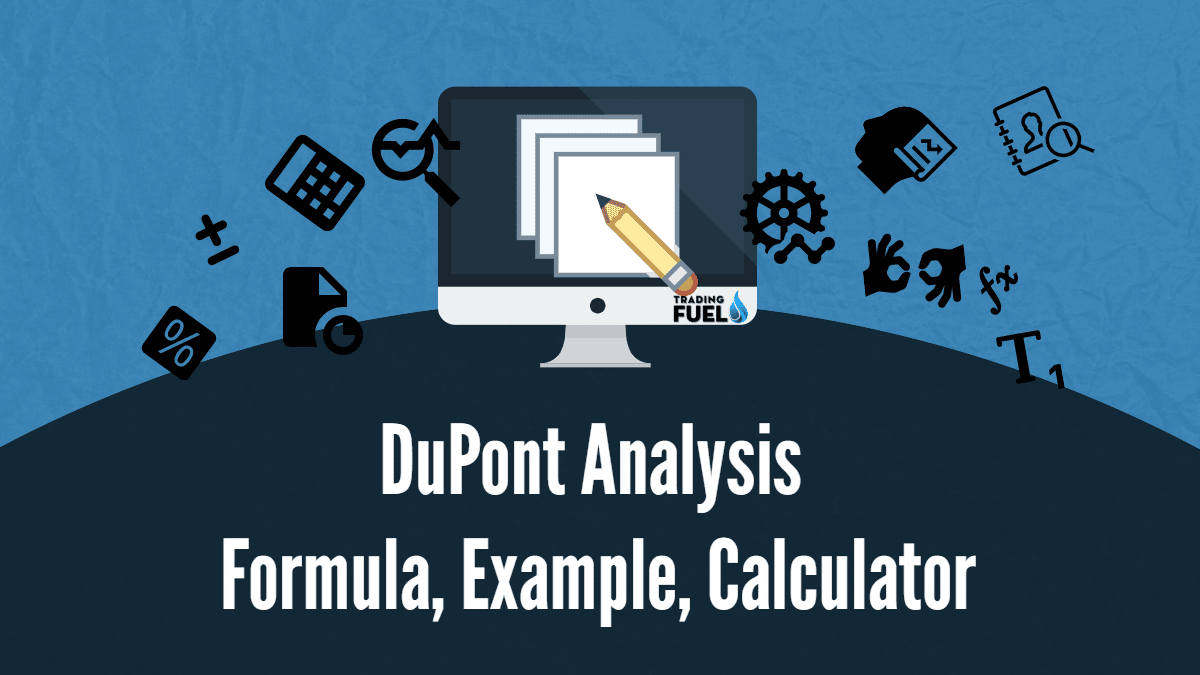Do you want to know what exactly DuPont Analysis is?
DuPont Analysis is basically on the concept of Return on Equity of a company that analysis on the Net profit margin, financial leverage and asset turnover.
This analysis was corporate in the year 1920.
Now, let us see in brief about “DuPont Analysis”
What is DuPont Analysis?
The DuPont analysis is also known as the DuPont Model that is the financial ratio based on the return on equity ratio that is used to analyze the company’s ability to increase its return on equity.
In a nutshell, this is the model that breaks down the return on equity ratio in order to explain on how companies can increase their returns for investors.
There are main three parts for the ROE Ratio:
- Profit Margin
- Total Asset Turnover
- Financial Leverage
On the basis of these parts performance of any of the company measure about that the company can increase it’s ROE by maintaining the high profit margin, increasing asset turnover or by leveraging the assets more effectively.
Let us see the basic formula for ROE

Let us see about the components of DuPont Analysis,
Components
- Profit Margin: – This is simply the basic profitability ratio.
The formula for this ratio is Net Profit divided by Total Revenues.
This formula shows about the profit generated after deducting all the expenses.
This is the primary factor that remains to maintain the profit margins and derive other ways to keep growing it by reducing the expenses, increasing prices etc, which will impact the ROE.
Profit Margin:- Net Profit/ Revenues
- Total Asset Turnover: – This ratio is calculated by using the assets to check the efficiency of the company.
The formula for this ratio is by dividing the revenues by average assets.
The formula for this ratio differs from across industries but it is useful in comparing the firms in the same industry.
It means, if the company’s asset turnover increases, this act as a positive impact on the ROE of the company.
Total Asset Turnover: Revenues/ Average Assets
- Financial Leverage: – This ratio defines about the debt usage that is used to finance the assets.
The formula for this ratio is average Assets divided by average assets.
The companies should maintain the balance in the usage of the debt.
In this, the debt is used to finance the operations and growth of the company.
But, the usage of excess leverage to increase the ROE can turn out to be bad decision for the company.
Financial Leverage: Average Assets/ Average Equity
Now, let us understand about the interpretation of this analysis.
Interpretation of DuPont Analysis
It provides a broader read of the Return on Equity of the company.
It highlights the company’s strengths and pinpoints the place wherever there’s a scope for improvement.
Suppose if the shareholders are discontented with lower ROE, the company with the assistance of DuPont Analysis formula will assess whether or not the lower ROE is because of low-profit margin, low asset turnover or poor leverage.
Once the management of the company has found the weak places, it should take steps to correct it.
The lower ROE might not perpetually be a priority for the company because it may additionally happen because of normal business operations.
The DuPont analysis has one more equation for more getting it research from the deep where the net profit margin has been further broken down into the EBIT Margin, Tax Burden, and Interest Burden.

Now this is the 5 Step formula for calculating the DuPont Analysis.
There is further more division for calculation of DuPont Analysis.

Limitations:
Though, the DuPont has many of the advantages but altogether it also have some of the drawbacks, like:
- This analysis is useful to make the comparison between the companies under the same industries.
- This analysis uses the formula that need to take from the accounting data from the financial statement of the company for the analysis purpose that can also be manipulated by the management for hiding purpose.
This was about the limitations of the DuPont analysis.
Let us get the conclusion:
Conclusion
This was about on our topic “DuPont Analysis” and from this you got to know about the formula for Return on Equity (ROE) that is important for every company to know. There are some conclusions as this is really helpful for the investor to know about this analysis as this will help them to make them further decisions for the company.
If the Net Profit margin increases without any further changes in the financial leverage then it shows about the company that it can also able to increase its profitability. But if the company is able to increase its ROE just because of increasing their leverage then this becomes the risk factor for the company as it is able to increase its assets by taking more debt on it.
So, if the ROE is increasing don’t take it as a good sign but again do the analysis on which factor or the components are contributing how much and check that the financial leverage should be less then only the ROE with the increment is good for the company. We hope that you like this blog on “DuPont Analysis” and you can also shares this with your mates.
About Us
Trading Fuel focusses main on the content for every topic about the stock market and tries to give the learners the comfort of understanding each topic with ease. So, you can also check other posted topics about the different section of the stock market. Make the days useful for yourself and read and learn more and make yourself updated. Happy Learning.

